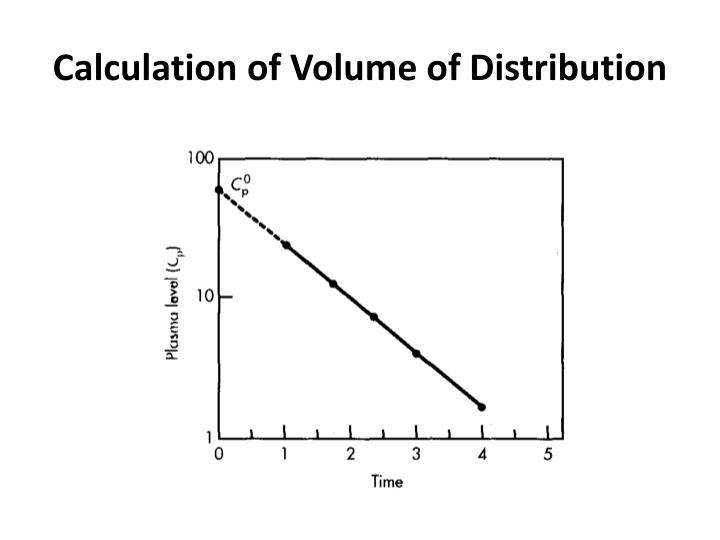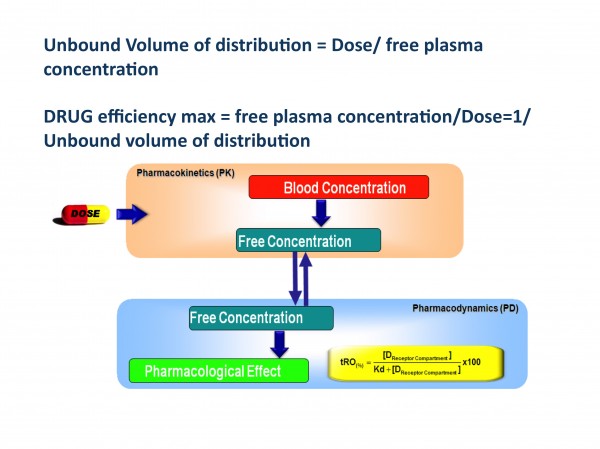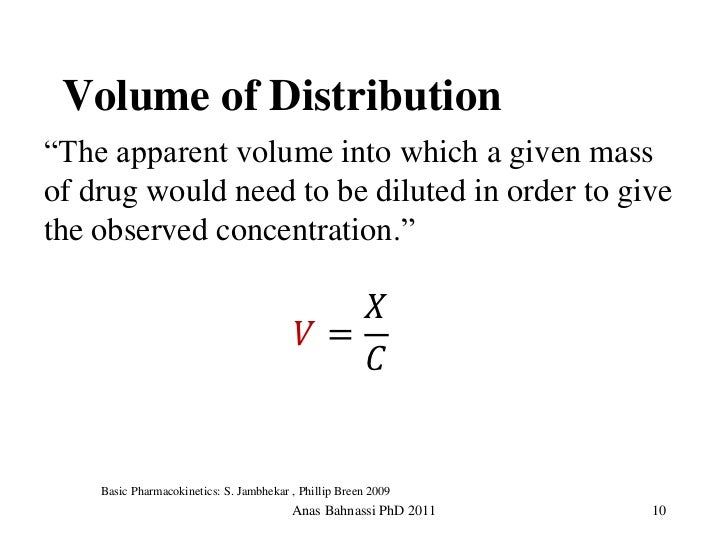

Consequently, the measured drug concentration in Container 2 is low and the calculated volume is high. The explanation for this observation is that some of the drug in Container 2 is bound to the sponge, which renders it unavailable for measurement of the drug concentration in water. (1)), the volumes derived are 1L and 100L for Container 1 and Container 2, respectively. By dividing the dose (one unit) by the measured concentration in each container ( Eq. Here, it is assumed that each container is a closed system after drug intake: no drug elimination occurs during the time for complete drug dissolution.

The concentrations in Container 1 and Container 2 are found to be 1unit/L and 0.01unit/L, respectively. After complete dissolution of the drug in the volume of water within each container, the drug concentrations are measured.

A one unit dose of the same drug is then added to each container. Container 2 also contains a small quantity of sponge that adds no significant volume to the overall container volume. Let us imagine there are two containers of the same size filled with 1L of water: Container 1 and Container 2. Given the same dose amount and the 100-fold reduction in drug concentration in Container 2, the V d of the drug in Container 2 is 100 times larger than that of the same drug present in Container 1. The V d is an apparent volume term that is determined from the amount of drug added and the resulting concentration. However, compared to plasma protein binding, much less is known about tissue binding or the sequestration of drugs, since reliable methods for estimating binding to tissue components in vivo are experimentally more challenging.Ī clarification of the concept of V d of a drug dissolved in two containers containing water. Binding to tissues also affects drug concentrations in the blood/plasma and the tissues/organs. Table 1 lists the extent of plasma protein binding of selected drugs.

A drug’s protein-binding characteristics also depend on its physicochemical properties, with lipophilic drugs more likely to bind to plasma proteins and consequently, less available to the intracellular spaces. The extent of plasma protein binding of a drug can be drug- or protein-concentration dependent, based on the affinity and capacity of the plasma protein. Albumin and α 1-acid glycoprotein are the two major proteins in plasma that are responsible for the binding of most drug compounds in the systemic circulation.
#Volume of distribution free#
It is the unbound or free portion of the drug that diffuses out of the plasma into the tissues/organs. Disposition is therefore a combination distribution and elimination.Īnother factor influencing drug distribution is the preferential binding to plasma proteins and tissues. The decrease in the blood concentration could be due to reversible loss of drug from the blood to the tissues, defined as distribution, or the irreversible loss of drug from blood, defined as elimination. Once absorbed into the body, drug compounds are distributed reversibly to various tissues of the body including the eliminating organs, such as liver and kidney, which results in a decrease in blood or plasma drug concentration. blood.ĭisposition, which describes the time course of drug distribution and elimination from the site of measurement e.g. Intake, which describes the time course of drug movement from the site of administration, e.g. Another way to consider pharmacokinetic processes is to group them into two components: These are disparate but interrelated processes that occur between drug administration and its irreversible elimination from the body. Pharmacokinetics is a branch of pharmacology that examines how drug concentrations change with respect to time as a function of absorption, distribution, metabolism and excretion.


 0 kommentar(er)
0 kommentar(er)
